Okay, we’ve managed to encapsulate the beauty of nature’s ecosystems and housed it inside a little glass world, so what do we do next?
Make it even smaller, of course!
In many ways, the tinier a terrarium, the more intriguing it becomes. Not only does it become cuter (smaller = cuter), but the science becomes more fascinating.
In how small a space are we still able to replicate some sort of self-sustaining ecosystem?
We’ll answer this question and more and show you exactly how to do it. But first, let’s get started with some miniature terrarium inspiration!

Terrarium Tribe is reader-supported. When you purchase through links on our site, we may earn an affiliate commission (at no further cost to you). 💜
Five Miniature Terrarium and Micro Terrarium Ideas
You’ll notice we’ve differentiated between mini and micro terrariums.
Now, this isn’t a scientific distinction, but on the grand scale of terrarium size, it’s important to have some delimitations.
Miniature terrariums refer to those that are small enough to be called such while still housing room for all of the ecosystem essentials seen in larger terrariums (layering, plants, etc.). Whereas their micro cousins are truly teeny tiny, they maximize minimization but won’t necessarily function as an ecosystem in the long run.
We’ll start at the larger end of our truly unscientific scale and move down toward the titchy depths.
1 | Bottle Terrarium
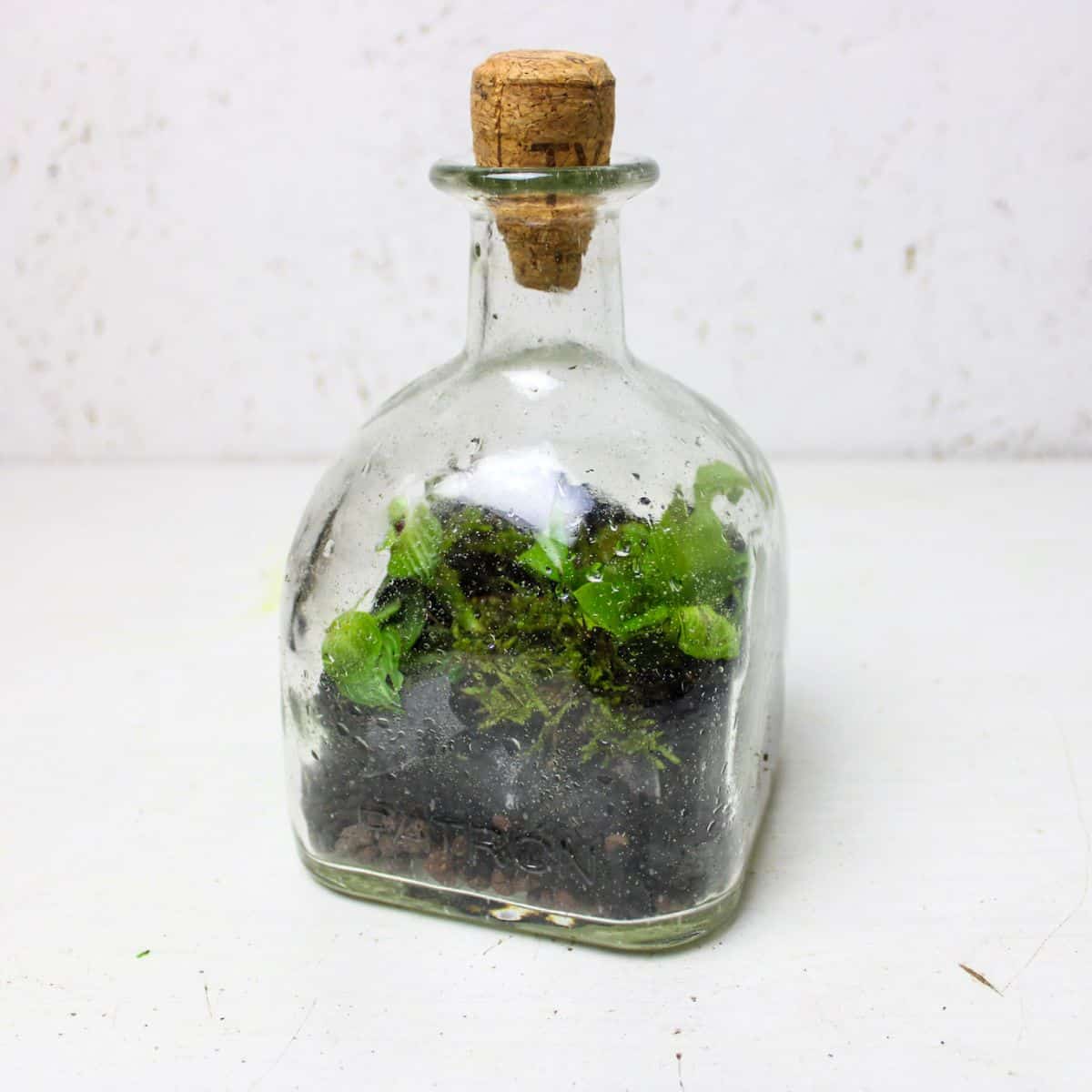
The key to any handmade or upcycled terrarium is to keep your eyes peeled for any goodies around your house that could contain or enhance your design.
The old tequila bottle I’m using today is a perfect vessel in which to create something new.
Used booze bottles are a perfect choice for a terrarium in a bottle as they’re usually quite sturdy and give you a good reason to polish off a drink or two (as if you needed another reason, you hound!).
There’s enough room in here to house the ecological essentials, and the shape of the neck is a bonus; it’s so slim that moisture will easily be retained inside, even without a cork stopper.
2 | Candle Terrarium
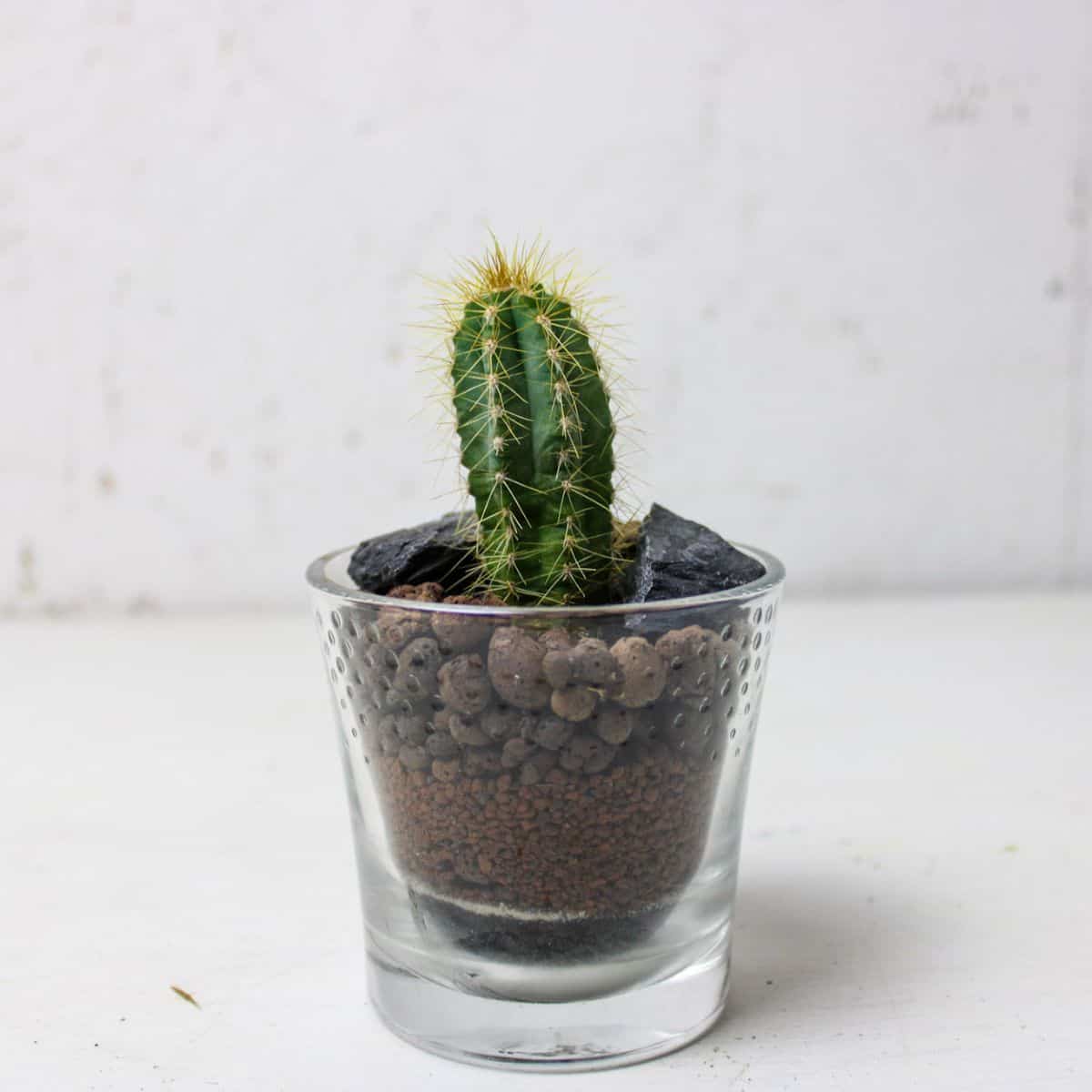
Now, this one is probably more accurately described as a planter. Though, we didn’t want to leave out a whole sub-genre of the terrarium world when considering puny possibilities.
Candle holders or small vases are another common household item whose relative depth and open top make the perfect basis for a desert terrarium.
Some colorful layering and a simple succulent or cacti go a long way to make a gorgeous addition to your mantlepiece.
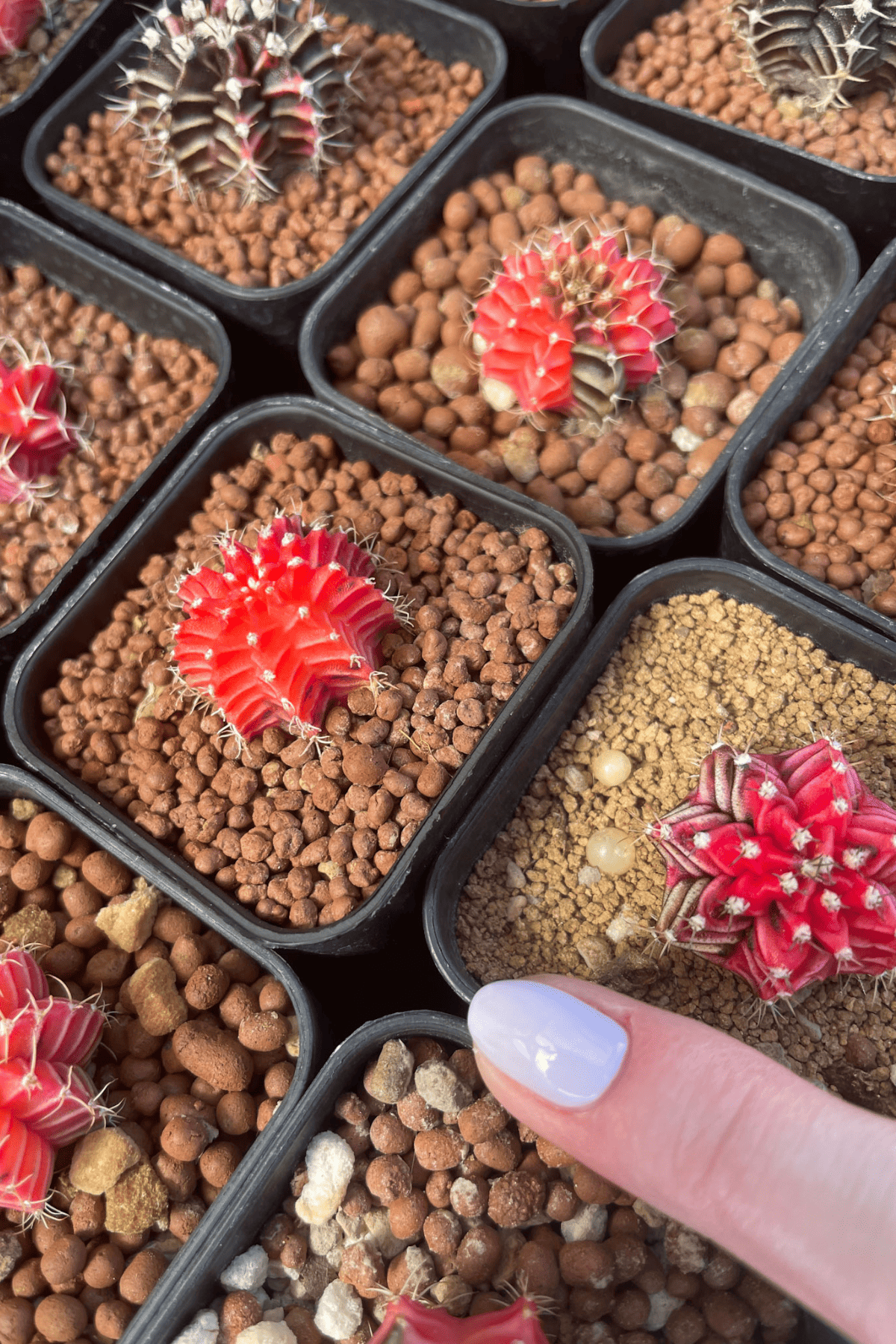
👉 Check out the articles on How to Make a Cactus Terrarium or the DIY Succulent Terrarium Guide If you’re interested in the best practices and care guide for the above.
If you want to create some funky sand layers, as I have, ensure the gravel layer onto which your sand is being poured is fine enough that it won’t let the sand pass through.
If you’re using black gravel for your base, use black aquarium sand first so that your subsequent layers remain crisp.
3 | Spice Jar Terrarium
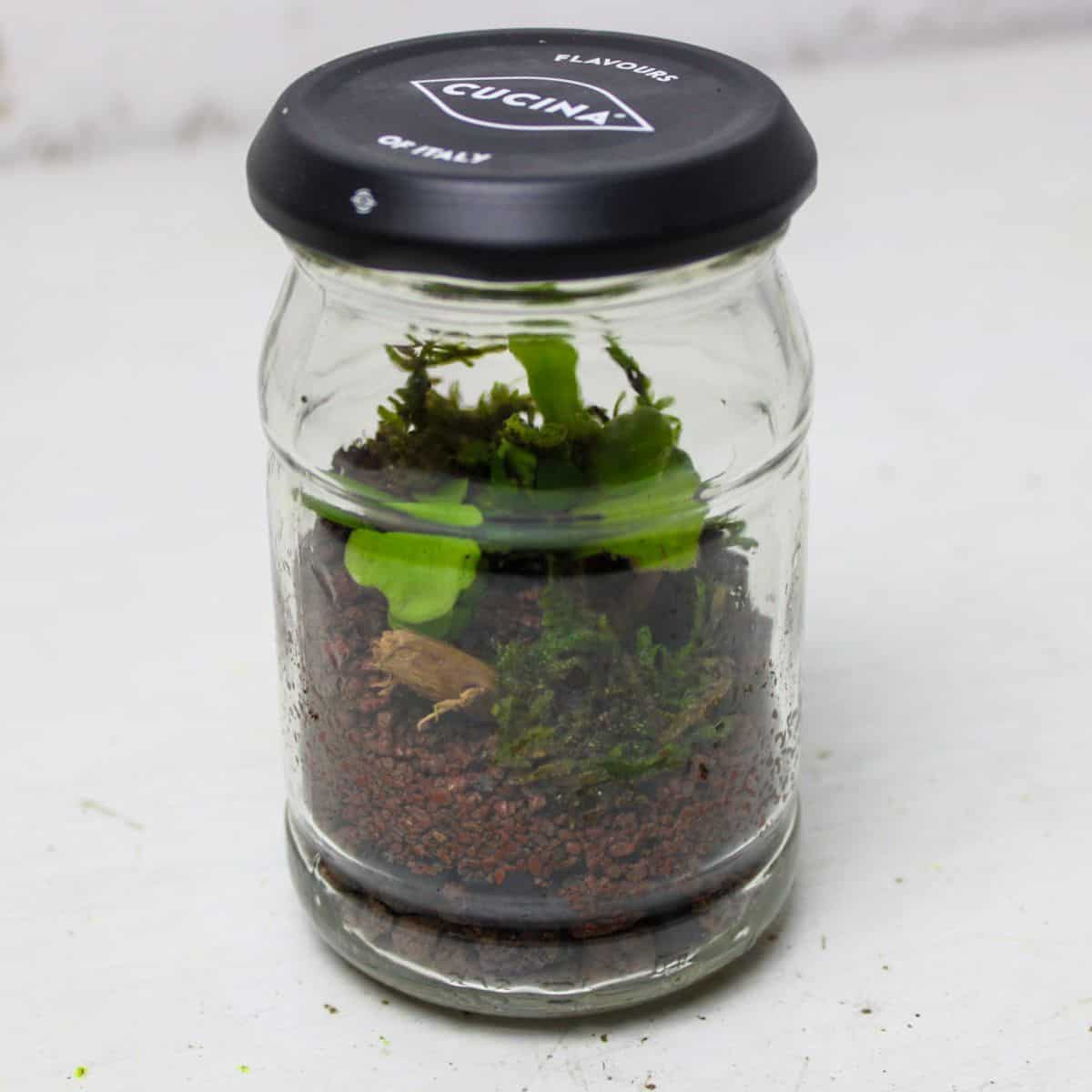
Old jars are another household staple. This could be something that once held herbs, spices, sauce, or as in our case today: pesto.
Personally, I love the shape of these sorts of jars as they allow you to create a 360º design.
You could use a mottled stone or a twisting twig at the center of your terrarium and still have room for some plants and moss.
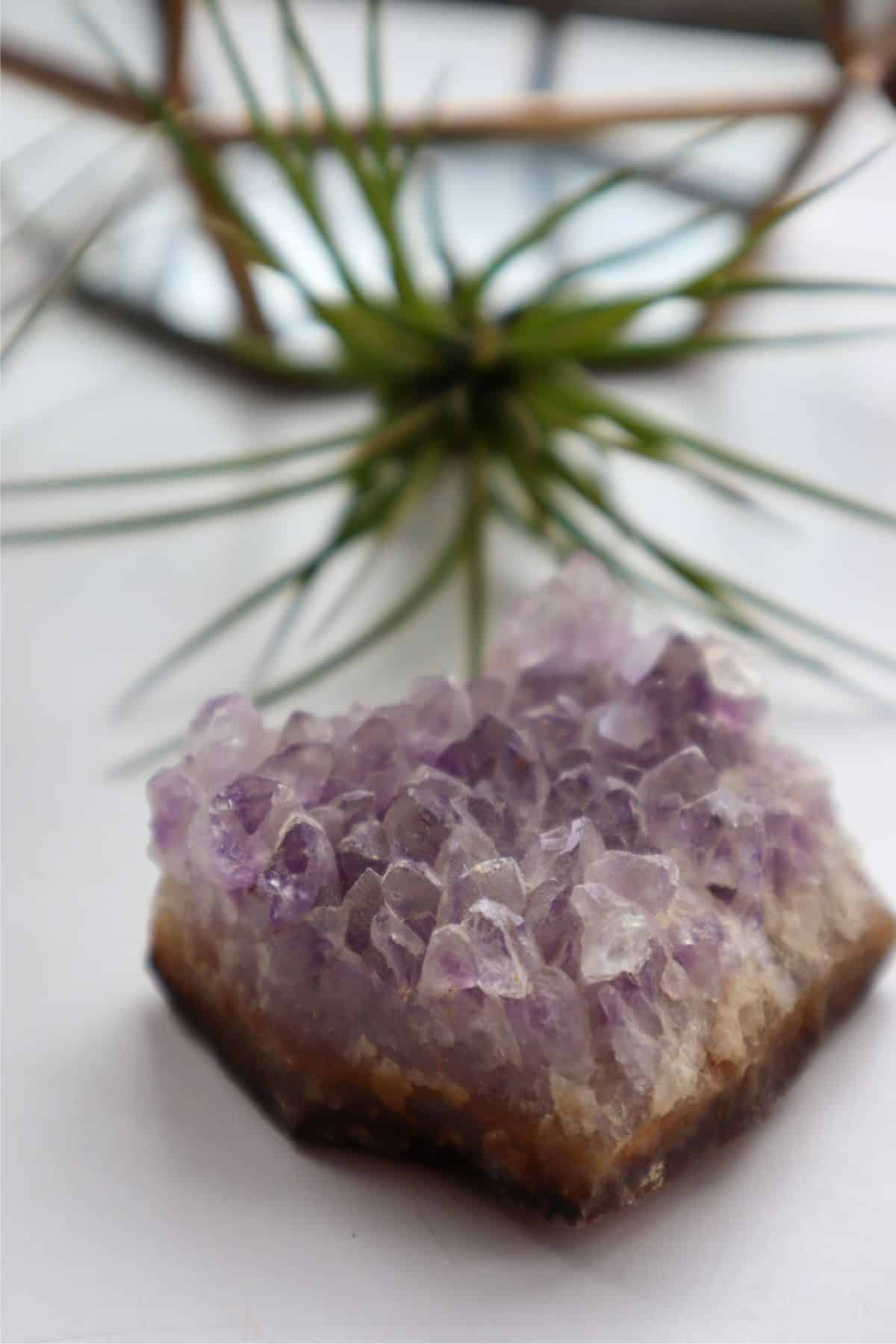
These jars often come labeled, but some hot water and steel wool will make short work of them.
If you’re feeling crafty, you could even paint the screw-top lid to personalize your design further.
Given how often one goes through pesto (that’s not just me, right?), you could create a whole range of these terrariums – each glass jar with a different design.
4 | Mason Jar Terrarium
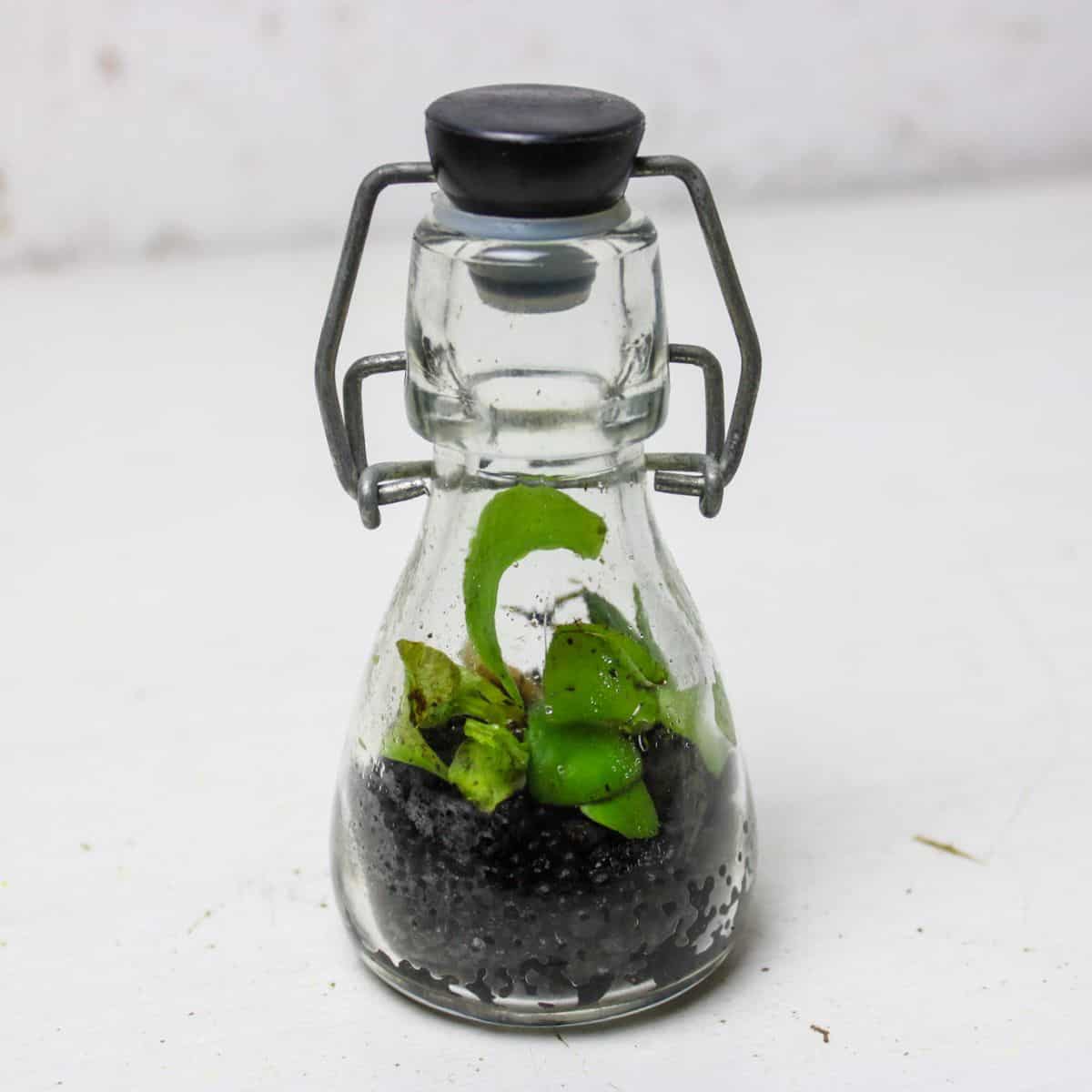
Mason jar terrariums come in all kinds of sizes.
I always seem to get these little swing-top vinegar and olive oil bottles for Christmas that are a common – and never unappreciated – terrarium gift.
They’re similar in size to our spice jars, though they can come in such a variety of interesting shapes the vessel alone really adds something to the look and feel.
And as well, these containers are seldom acquired individually – you’ll often have a few to play with.
Why not try compacting the soil at an angle or up the side of your glass to establish a vertical aesthetic?
5 | Tiny Jar Terrarium
We’ve now truly departed from the miniature and are diving deep into the experimental waters of the micro terrarium – something so small you’ll need that extra touch of ingenuity.
Let’s look at two different ways to do it:
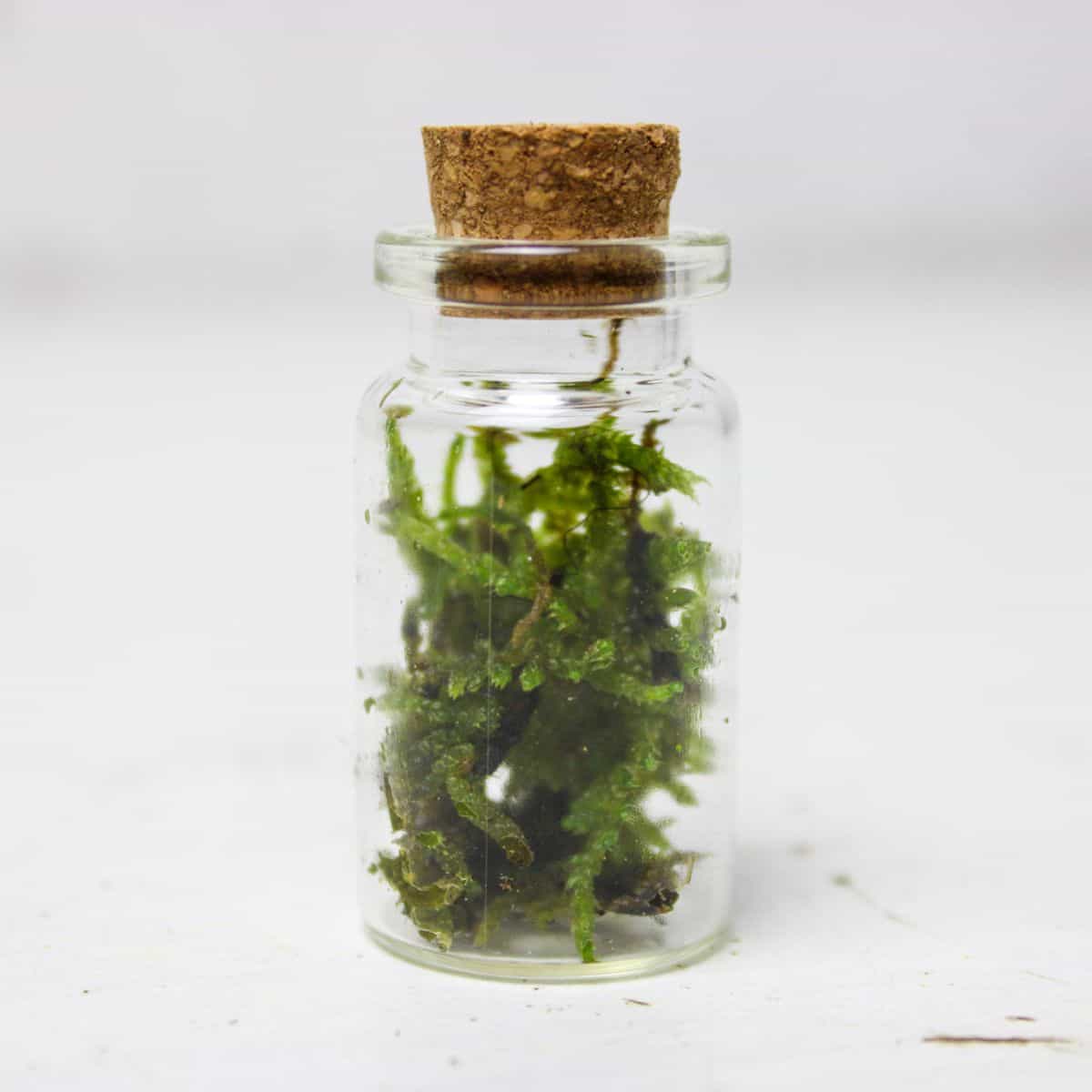
First, we have the micro moss terrarium.
For this, you can simply pop a tuft of live sheet moss in so you can see that wonderful green from all angles. Give it a tiny bit of water every now and again if it dries out, and you’re good to go.
Though, how long it will last is a little tricky to say. So using preserved moss is a viable alternative (and what is used most often in terrarium jewelry).
The second micro terrarium method is the super popular mini marimo moss terrarium bottles.
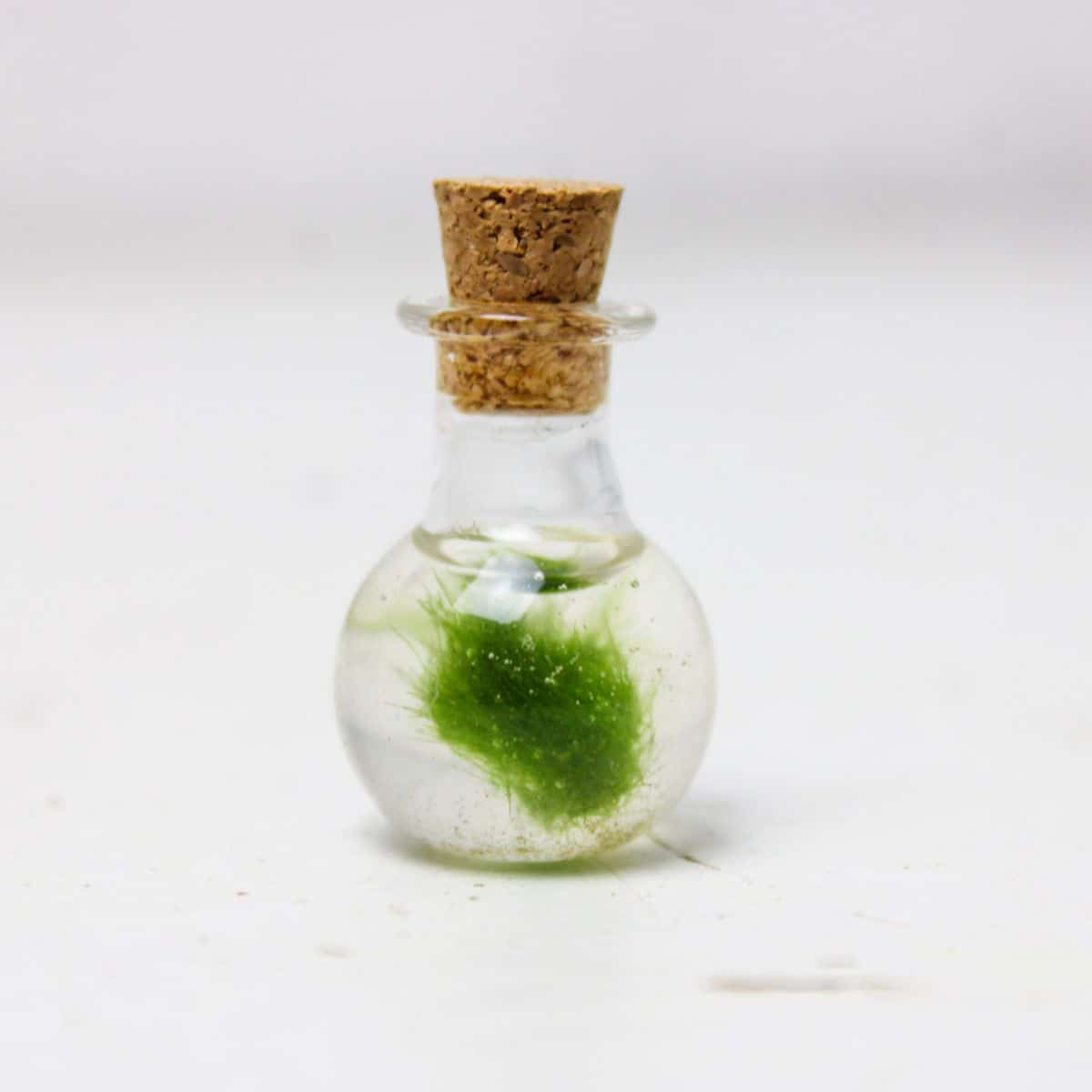
They’re simple to make, and I think they look super elegant.
All you need to do is pinch off a small bit of marimo from a larger ball, gently roll it up into a ball shape once more and poke it down into your container.
Fill this up with filtered water and you’ve done it! Just change the water every couple of weeks, and you can enjoy it to your heart’s content.
Surprisingly, these little jars are more readily available than you might think.
👉 Shop teeny tiny terrarium jars on Etsy.
BONUS: The Nano Terrarium
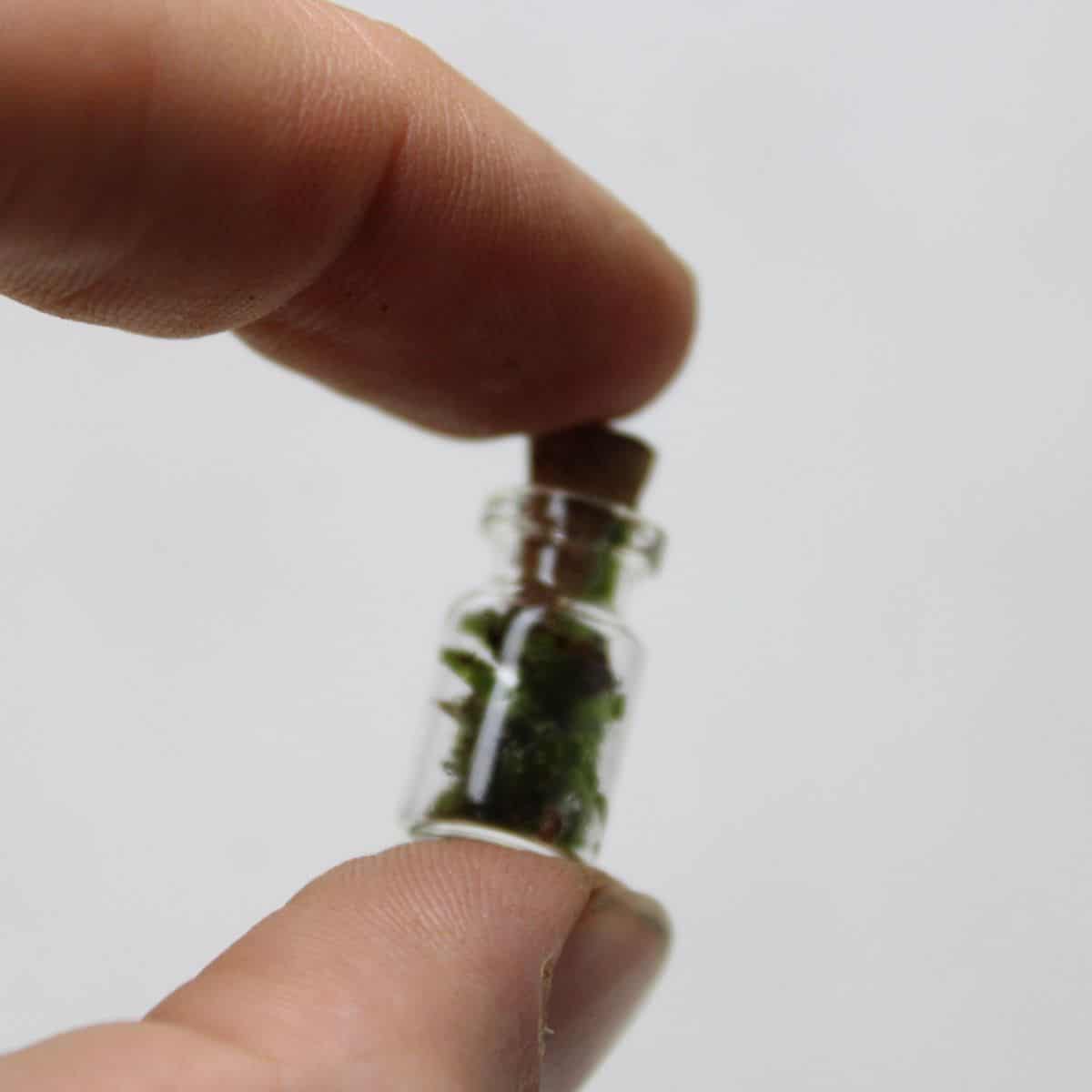
I couldn’t help myself.
There’s really not much to say about this other than it is really, really, really small. All you need is to find a bit of moss, a tiny piece of corked glassware, and cuteness automatically ensues.
Tiny DIY Terrarium Kit: What You’ll Need
Hopefully, you’re feeling inspired to make a tiny terrarium (or a hundred), so now it’s time to look at exactly what you’ll need to create your terrarium. Just know that it will change a little depending on your setup.
#1: Glassware. Although we’ve given some examples above, these are far from exhaustive. Once you start looking for terrarium vessels, you’ll find them everywhere (the kitchen is a particularly good place to start).
#2: Terrarium plants. Well, duh! We’ll get into more depth on your best terrarium options below.
#3: Moss. Perfect to create wild grasslands or a rainforest aesthetic and fit into tiny places most things can’t.
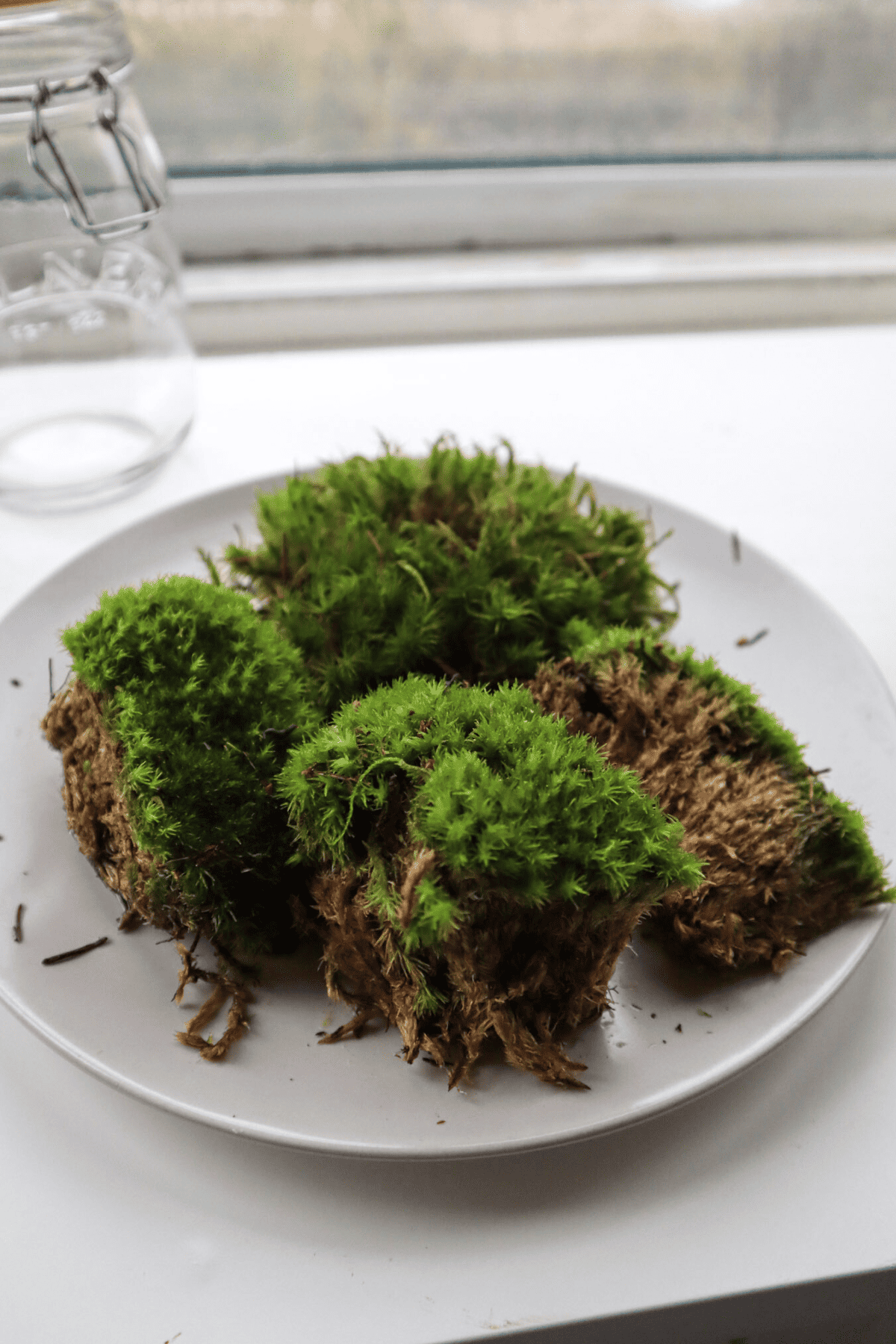
#4: Substrate. It’s up to you which substrate to choose from, whether you’re using a pre-made substrate like the Terrarium Tribe signature substrate or creating your own. Each potential ingredient has its benefits.
👉 Read more in our article on the Best Substrates to Use in Your Terrarium.
#5: Drainage material. This is to create a layer of pebbles, gravel, sand, or leca, which will act as a “false bottom” to prevent your terrarium from becoming oversaturated by allowing excess water to pass through your soil, preventing root rot.
👉 Shop terrarium leca.
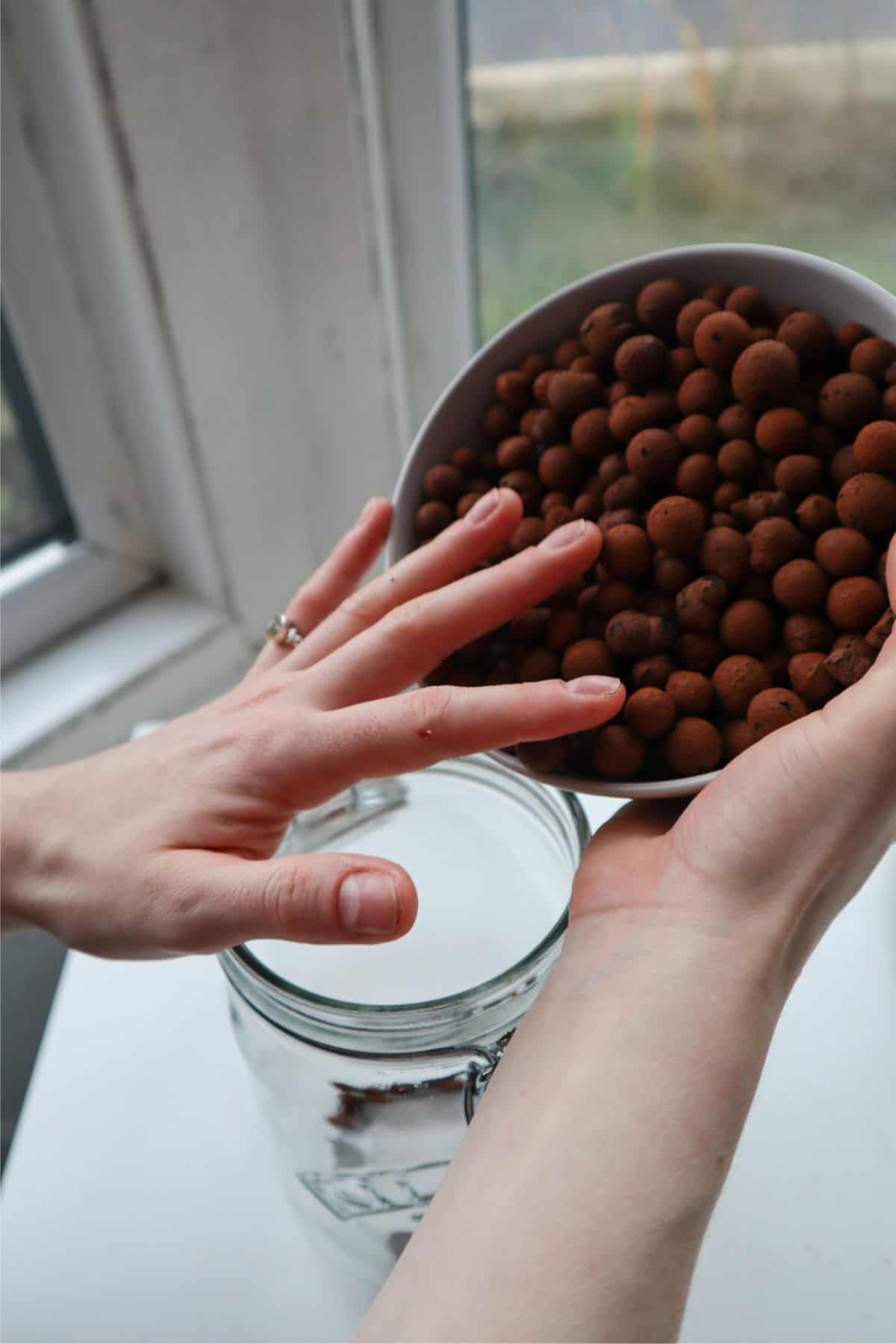
#6: Springtails. These beneficial terrarium insects will keep your system clean. If your terrarium is particularly titchy (e.g., a micro moss terrarium), you’ll likely not have enough room.
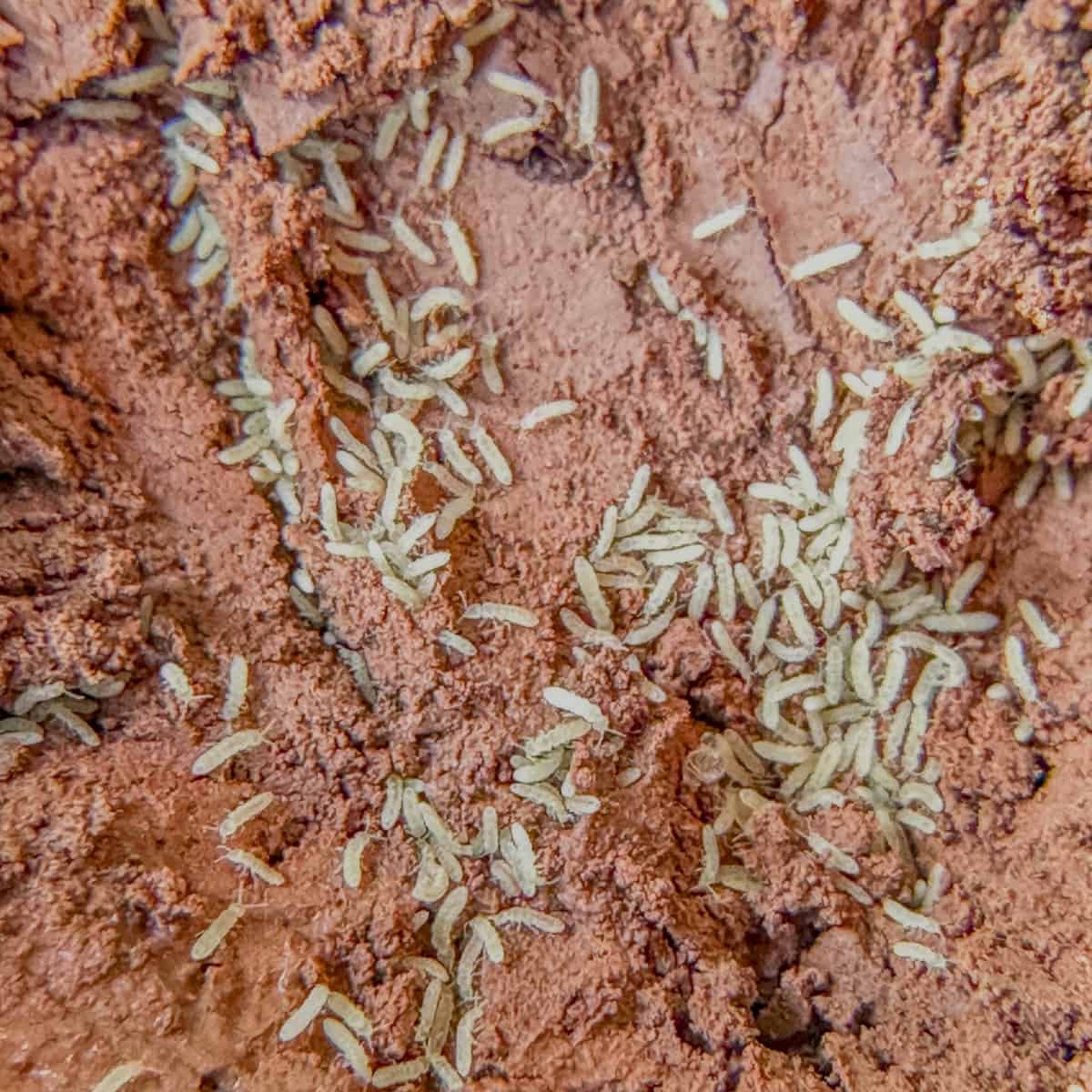
👉 Grab a temperate white springtails culture from our shop.
#7: Tool Kit. For a tiny terrarium, my recommendation is for you to have the following on hand:
- A paintbrush – use the end to create holes and the brush to clean the glass and pat down the soil.
- A pair of tweezers – a great aid in placing your plants.
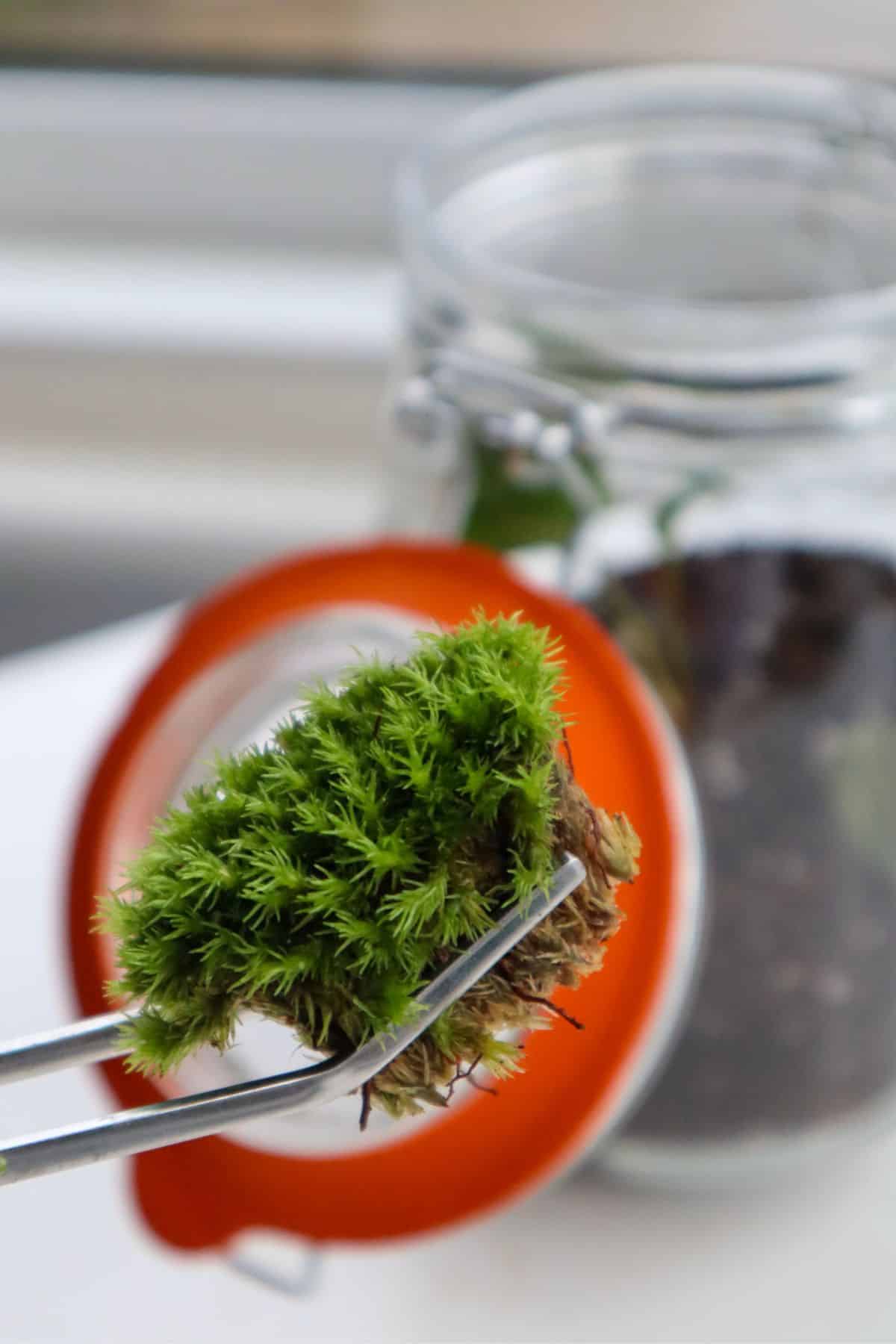
- A water mister to water your terrarium; alternatively, you could use a pipette.
- A funnel to prevent a substrate mudslide.
👉 For a full breakdown of which terrarium tools are essential, which aren’t, and how to use them, check out our Terrarium Tools Guide.
Top Tiny Terrarium Plants
Now, you’ll need to find environmentally appropriate plants for your closed ecosystem and get them at an appropriate size.
Tropical plants that prefer higher humidity and evenly moist, well-drained soil will be your go-to for any closed terrarium setup – they all conveniently tend to prefer indirect lighting, too.
So that’s suitability taken care of.
But one of the main issues is that many tropical species will produce larger leaves as they mature, which isn’t ideal in a tiny container.
So try to stick to small species that will grow in size but never produce much larger leaves.
Here are some of my top picks:
- Peperomia
- Ficus
- Dischidia
- Pilea plants
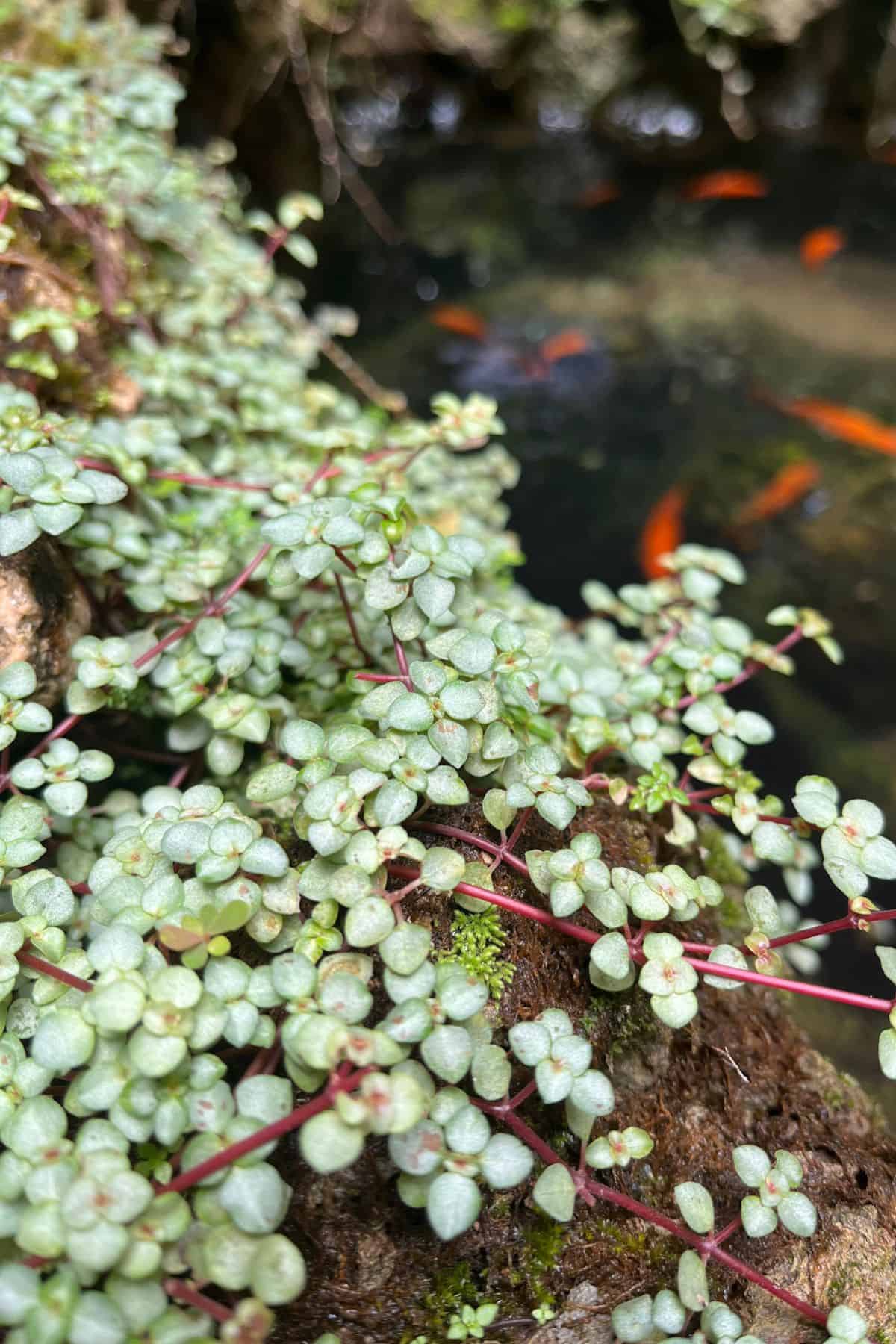
- Selaginella
- Dwarf Ferns
For more, check out our best plants for small terrariums.
Now let’s talk sourcing. As you might imagine, sourcing the right-sized flora to befit your tiny ecosystem can be tricky, but it’s certainly not impossible.
1. Buy miniature plants.
It’s true that many garden centers don’t stock small terrarium plants, but I’ve been surprised in the past by how many do, so it’s always worth checking your local plant place.
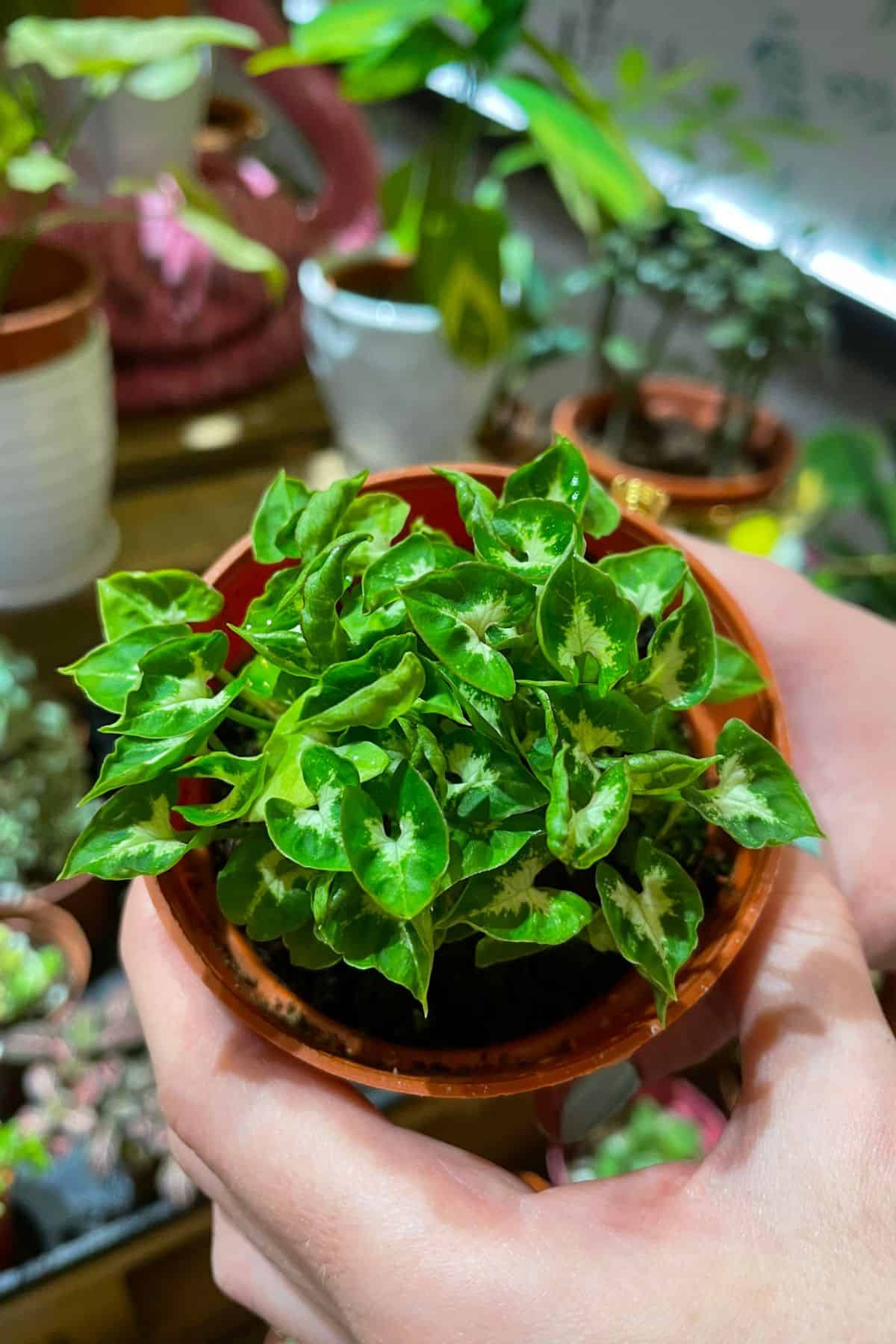
2. Propagate from larger plants.
You can always use a small cutting from a larger plant!
It’s one of the easiest ways to get a good-looking plant at the right size. I, for example, have a healthy Pilea peperomioides that is popping out babies like there’s no tomorrow.
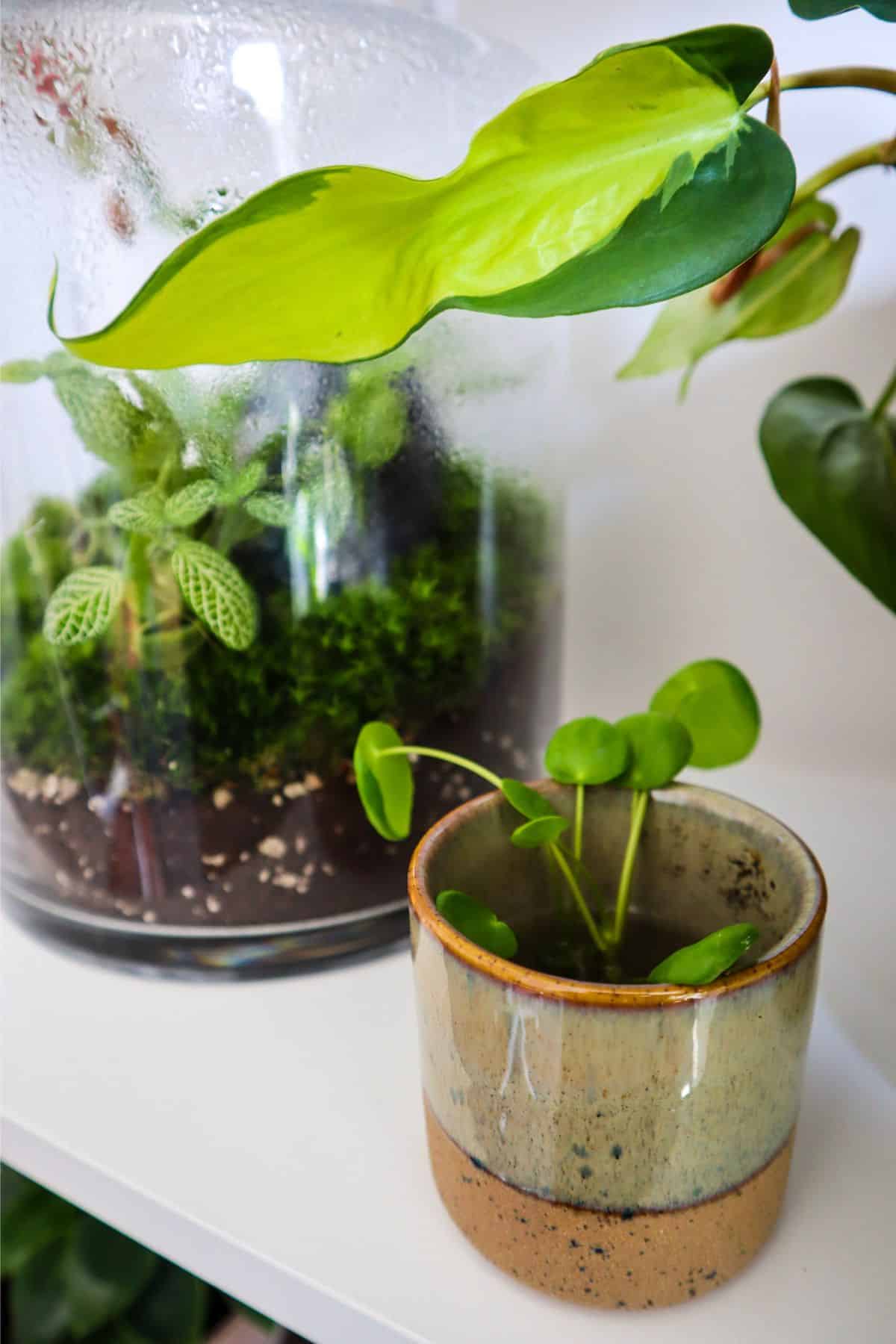
Each time a new one pops up, it’s either getting split and housed in a new pot or joining some other plant pals in a new terrarium design.
How to Make a Miniature Terrarium DIY
For a step-by-step, head over to our How to Make a Terrarium guide.
Once you have your tiny terrarium, this is how you’ll need to care for it; closed terrariums generally prefer the following conditions:
- Mid-high indirect light. This means a sunny room but no direct sunlight onto the terrarium.
- High humidity. This should be achieved simply with an initial light misting, and then with a closed lid, your terrarium will self-regulate its water supply.
- Evenly moist, well-drained soil. To achieve this, I recommend ensuring your soil is moist to begin with but that your drainage layer isn’t soaked with water. It can be a tricky balance to strike, so just be gentle with your watering.
- Keep away from sources of artificial heat. This means radiators, heaters, and hobs. You don’t want your plants to cook now, do you?
Now it’s Your Turn!
Which tiny terrarium build have you chosen for your next project? Let us know in the comments!
Oh, and if you need some inspiration for your next build – check out our Terrarium Ideas and Terrarium Themes posts.

I made some tiny terrariums that have a thin neck. How can I water them if a mister bottle can’t be used and I can’t feel the soil to see if it is too dry? Should I use a dropper instead?
Yep – a dropper or pipette is the best bet!